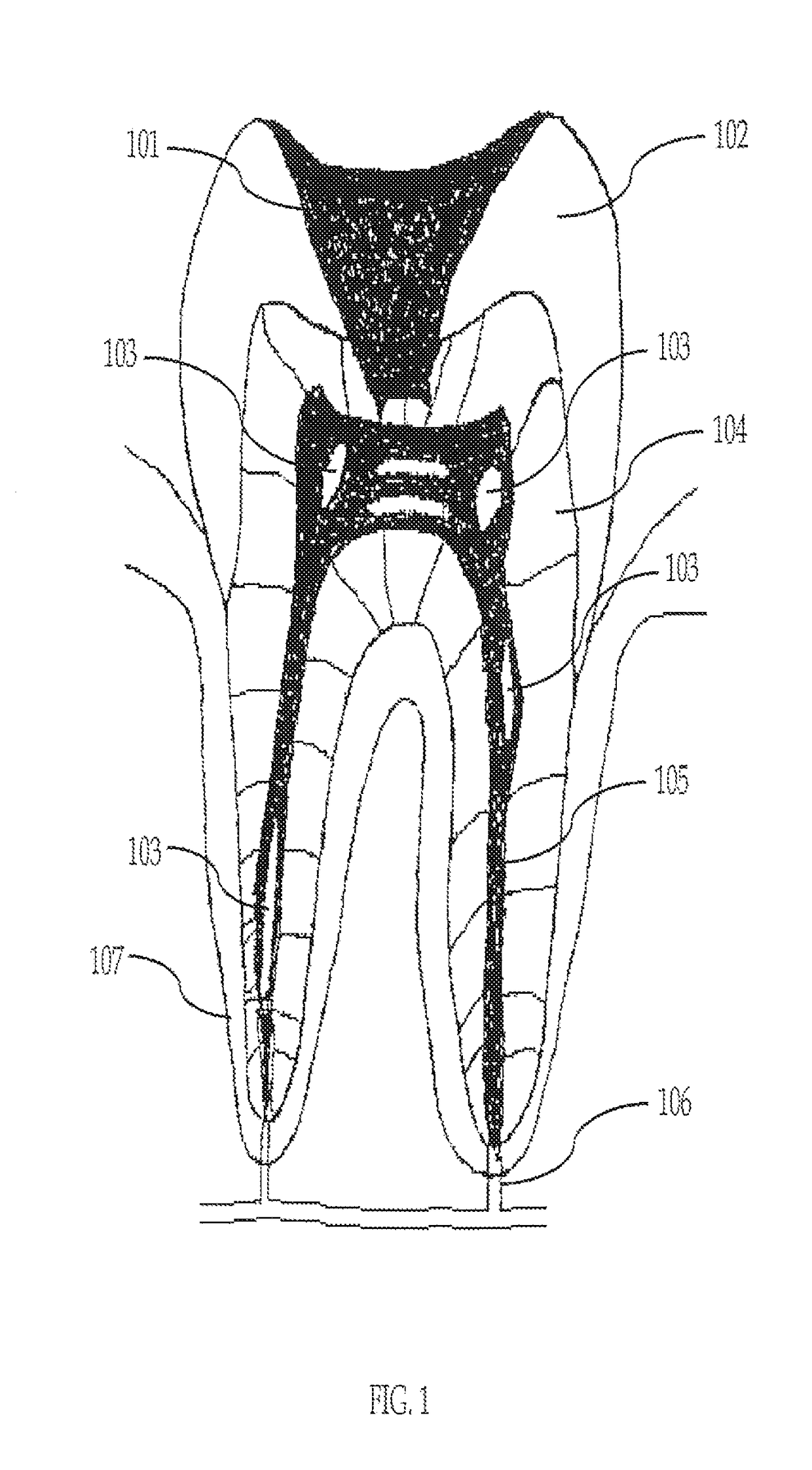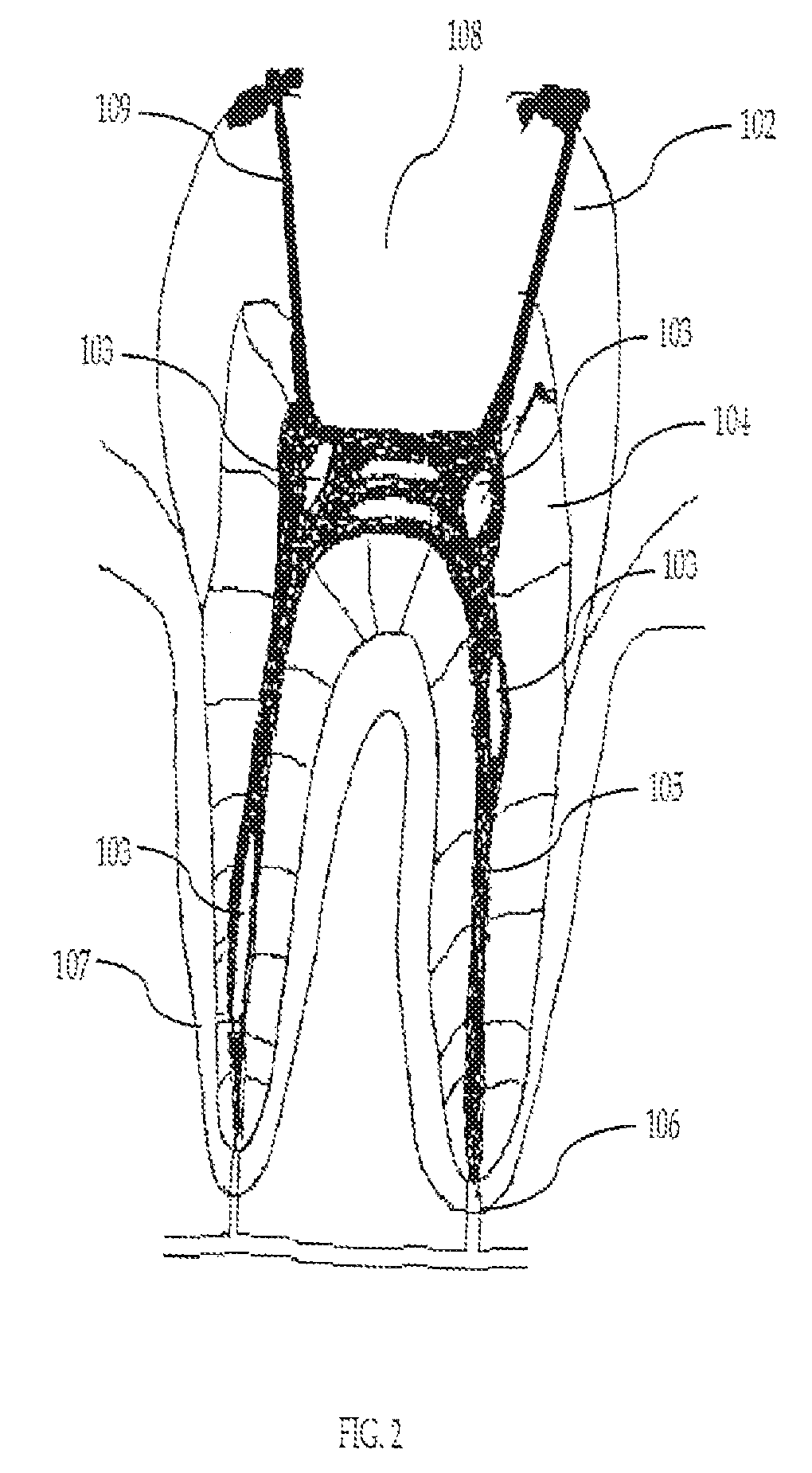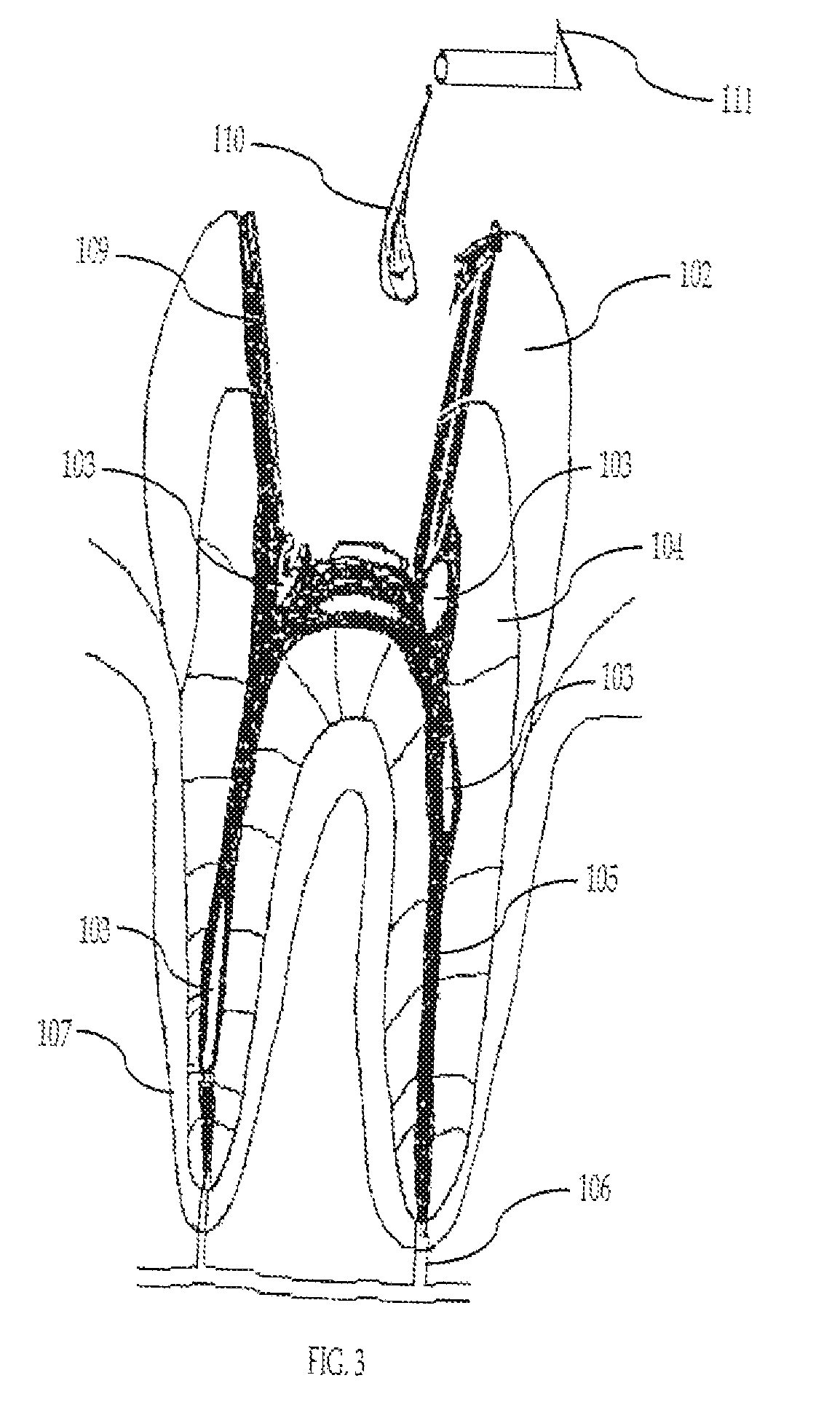Composition and method for using medicament for endodontic irrigation, stem cell preparation and tissue regeneration
a technology of stem cell preparation and endodontic irrigation, applied in the field of composition and method of using medicament for endodontic irrigation, stem cell preparation and tissue regeneration, can solve the problems of no single medicament or irrigant, and complication or failure of treatment, so as to prolong the working time of sodium hypochlorite, and preserve the mineral content of dentin
- Summary
- Abstract
- Description
- Claims
- Application Information
AI Technical Summary
Benefits of technology
Problems solved by technology
Method used
Image
Examples
Embodiment Construction
[0050]The present invention will be illustrated below in conjunction with an exemplary application, e.g., root canal treatment. Although well suited for use with, e.g., a medical application having disulfide bonds and requiring breakage of disulfide bonds, the present invention is not limited to any particular type of medical application. Those skilled in the art will recognize the disclosed techniques may be used in any medical or non-medical application in which it is desirable to provide breakage of disulfide bonds.
[0051]The phrases “at least one”, “one or more”, and “”and / or“” are open-ended expressions that are both conjunctive and disjunctive in operation. For example, each of the expressions “at least one of A, B and C”, “at least one of A, B, or C”, “one or more of A, B, and C”, “one or more of A, B, or C” and “A, B, and / or C” means A alone, B alone, C alone, A and B together, A and C together, B and C together, or A, B and C together.
[0052]The term “a” or “an” entity refers...
PUM
 Login to View More
Login to View More Abstract
Description
Claims
Application Information
 Login to View More
Login to View More - R&D
- Intellectual Property
- Life Sciences
- Materials
- Tech Scout
- Unparalleled Data Quality
- Higher Quality Content
- 60% Fewer Hallucinations
Browse by: Latest US Patents, China's latest patents, Technical Efficacy Thesaurus, Application Domain, Technology Topic, Popular Technical Reports.
© 2025 PatSnap. All rights reserved.Legal|Privacy policy|Modern Slavery Act Transparency Statement|Sitemap|About US| Contact US: help@patsnap.com



